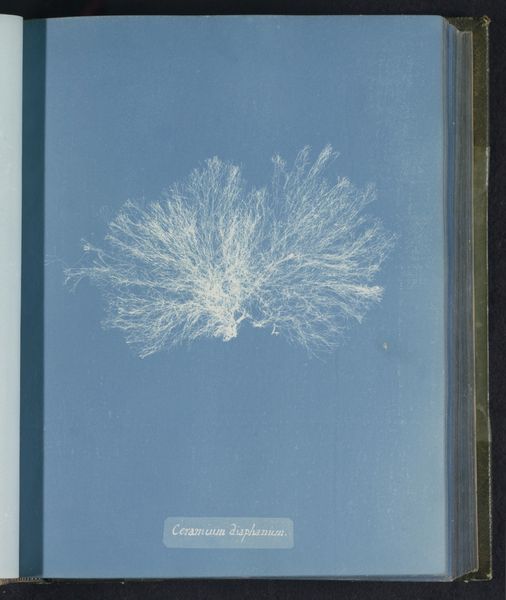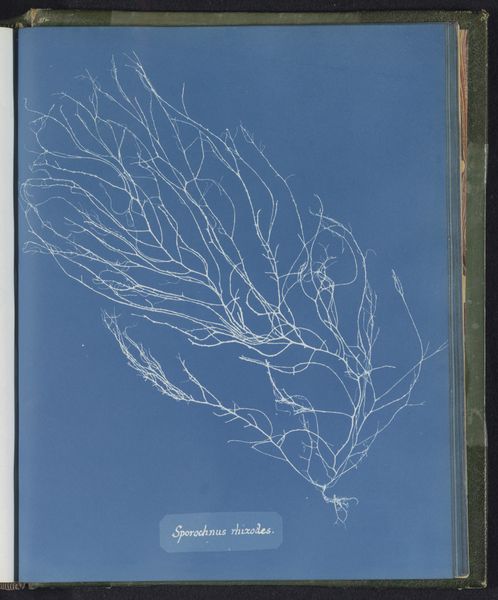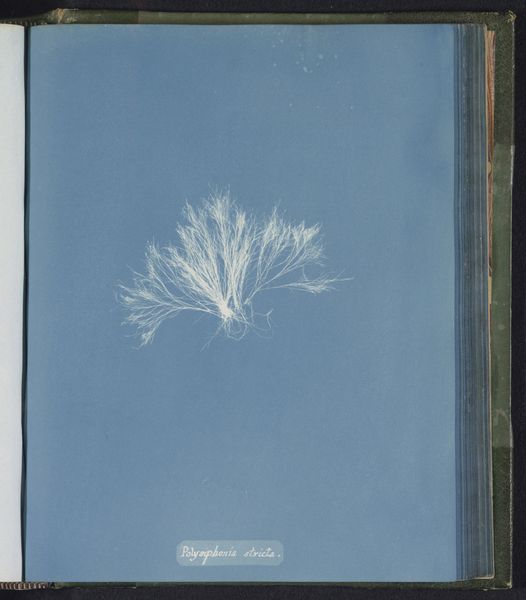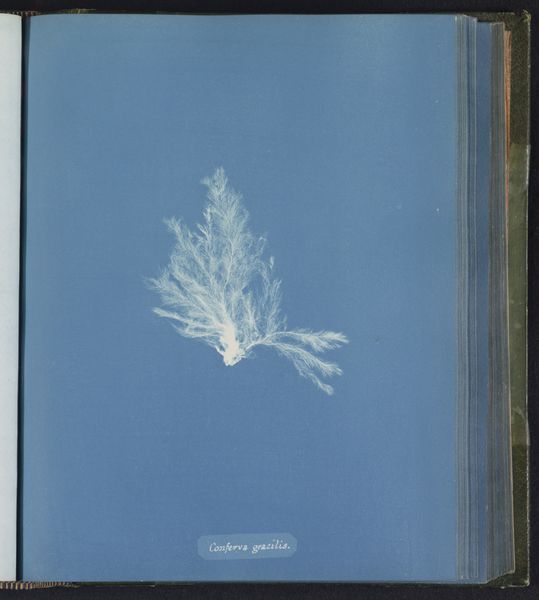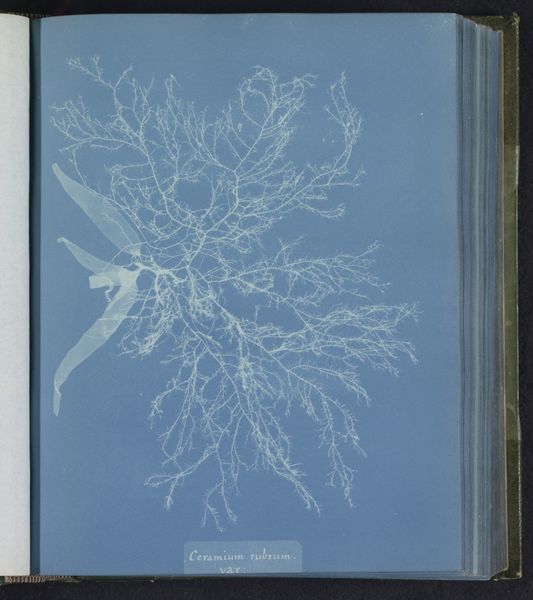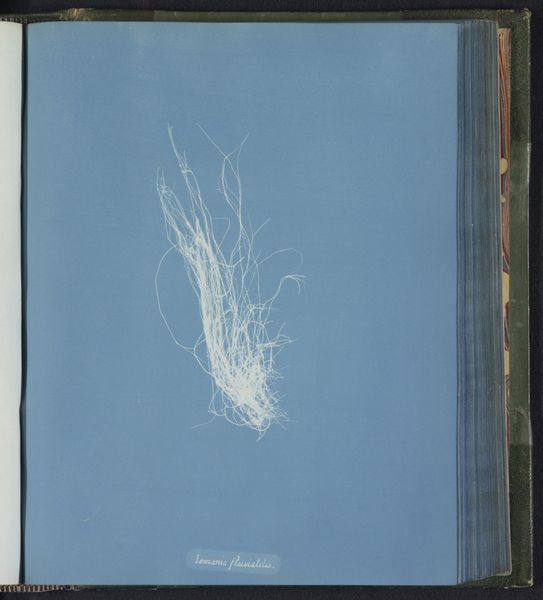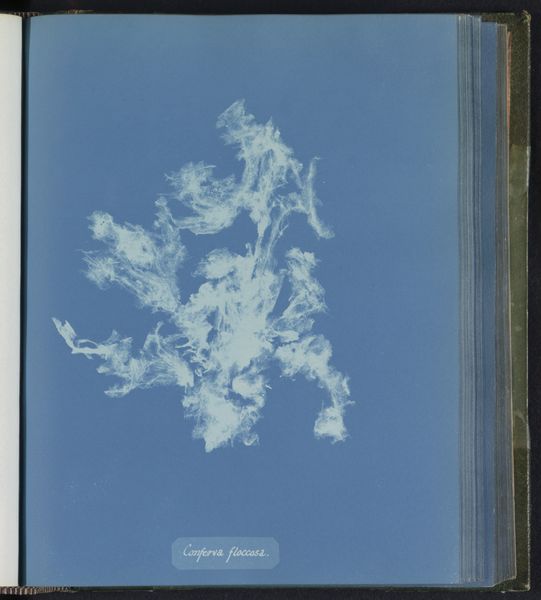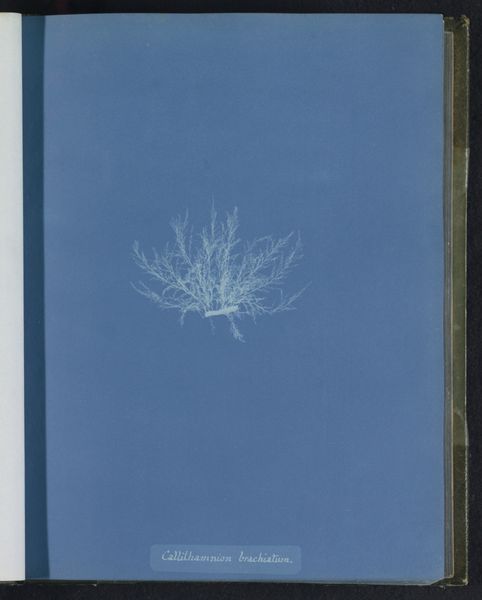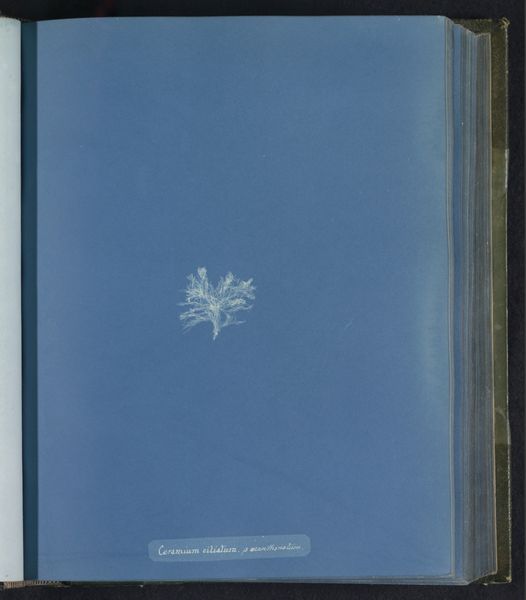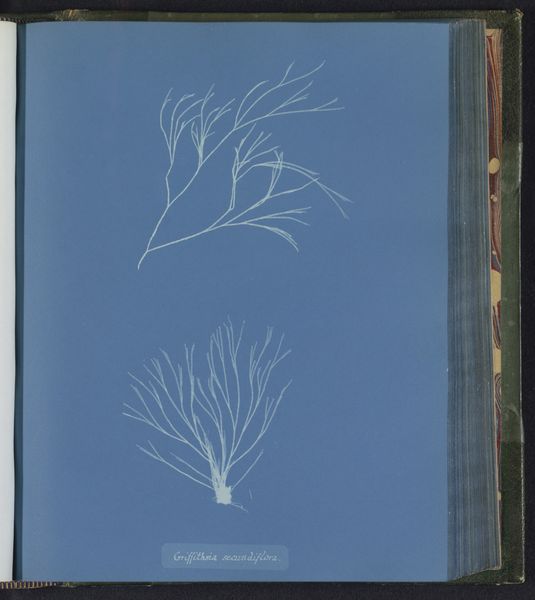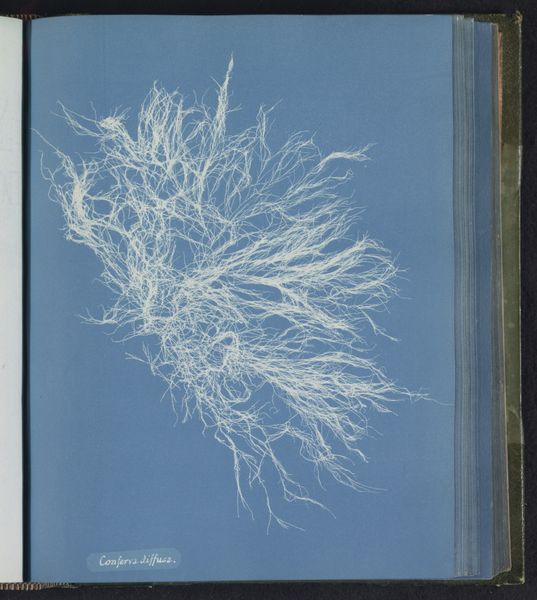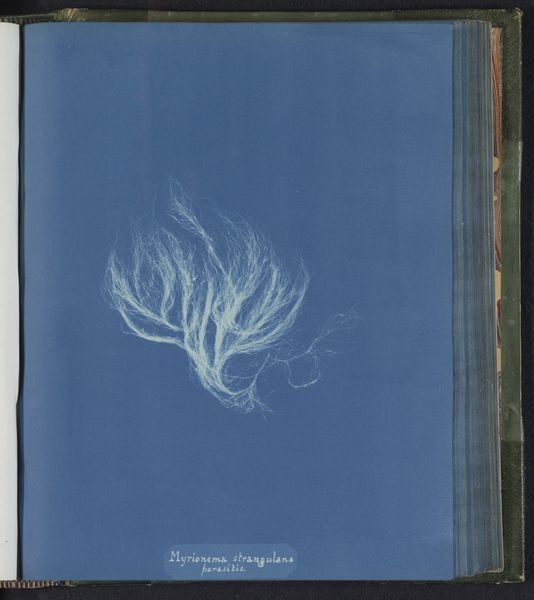
print, cyanotype, photography
#
still-life-photography
# print
#
cyanotype
#
photography
#
line
#
naturalism
#
botanical art
#
realism
Dimensions: height 250 mm, width 200 mm
Copyright: Rijks Museum: Open Domain
Anna Atkins made this cyanotype of Ectocarpus distortus in the mid-19th century, using a process that bypassed the need for a camera. Atkins placed the seaweed directly onto paper treated with iron salts. Exposed to sunlight, the paper turned blue, except where the plant blocked the light. After washing, what remained was a ghostly white silhouette against a rich blue ground. This photogram, as it’s known, resulted from a simple chemical reaction, but it also speaks to a larger cultural moment. In the Victorian era, there was an enormous appetite for cataloging the natural world. Photography was initially embraced as a tool for scientific documentation. But in Atkins's hands, the method transcended pure utility. Her images possess a stark beauty that challenges traditional boundaries between art and science, reminding us that even the most technical processes can yield surprisingly expressive results.
Comments
No comments
Be the first to comment and join the conversation on the ultimate creative platform.
